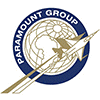Sukhoi begins flight testing of Su-35S variant
Written by defenceWeb, Friday, 06 May 2011
 Sukhoi has began flight testing of its Su-35S ‘Flanker-E’ multirole fighter. The aircraft, on order for the Russian air force, is an improved variant of the Su-35/Su-27 series.
Sukhoi has began flight testing of its Su-35S ‘Flanker-E’ multirole fighter. The aircraft, on order for the Russian air force, is an improved variant of the Su-35/Su-27 series.Sukhoi on Tuesday announced that the first production Su-35S had performed its maiden test flight from the Komsomolsk-on-Amur Aircraft Production Association airfield in the Siberian Far East. The 90 minute flight was used to check two of the aircraft’s biggest advances: the NPO Saturn 117S engines and the MNPK Avionika KSU-35 fly-by-wire flight control system. All aircraft systems and engines functioned smoothly, Sukhoi reports. The aircraft was piloted by test pilot Sergey Bogdan, who flew the first Su-35 prototype on February 19, 2008.
The first flight is a big step forward for the programme and will speed up the road to deliveries. A setback for the project came on April 29, 2009, when the third Su-35S prototype’s breaks failed, causing the aircraft to leave the runway and the left engine to catch fire. Test pilot Yevgeni Frolov safely ejected, but the aircraft was badly damaged.
After the completion of production flight tests the Su-35S will be delivered to the Russian Ministry of Defense. Sukhoi said the Su-35/S has been presented for state trials ahead of deliveries. In August 2009 the Russian Air Force ordered 48 Su-35s for delivery by 2015, as well as 16 Su-27/30s. The Su-35S will be used to fill the gap until the Sukhoi PAK FA enters service and is being positioned to succeed most Su-30MK variants as Sukhoi’s choice export fighter.
The Su-35 is an outgrowth of the Su-27. Originally designated Su-27M, it was renamed Su-35 in 1993. Ten prototypes were built and three production aircraft were delivered to the Russian air force in 1996. Although the Russian air force never ordered the Su-35, Sukhoi continued development of the aircraft with an eye on possible foreign sales. The resulting aircraft was called the Su-35BM (‘Deep Modernisation’), or Su-35S (Serial) in production form. The Su-35BM/S first flew on February 19, 2008.
The Su-35S features a number of improvements that make it a ‘4++’ generation fighter that has many fifth generation elements. For instance, its radar signature was reduced through a conductive canopy coating (preventing radar signals from entering the cockpit), the use of radar absorbent materials and coatings, and a reduction in the number of antennas and protruding sensors.
Structurally, the Su-35S features more titanium to increase service life to 6 000 flight hours/30 years of operation, with 1 500 hours or ten years between overhauls. The airframe was also strengthened to handle the increased takeoff and landing weight of the aircraft - the nose landing gear has also been strengthened for the same reason, and now features two wheels. Other airframe changes include the elimination of canards and the air brake for better manoeuvrability.
The Saturn 117S engines are upgrades based on the AL-31F/AL-41F series and each produce 19 400 pounds of thrust dry and 32 000 pounds in afterburner. They are fitted with thrust vectoring control nozzles for enhanced agility. Specified lifetime is 4 000 hours, versus 3 000 for the AL-31F.
Other changes include a rear-looking self defence radar in a new tail cone, L175M Khibiny-M electronic warfare suite and full glass cockpit with helmet mounted display. The N035 Irbis-E passive electronically scanned array radar (a follow on to the Bars-M), can detect 30 airborne targets and track 8 at a distance of around 400 km. In case radar cannot be used, the aircraft’s infrared search and track sensor can detect aircraft at roughly 80 km.
Add comment
....
Related News
- Nigeria’s NIMASA receives patrol boats
- Cassidian TRS-4D naval radar demonstrates its capability
- Maritime cadets set sights on Antarctica
- ATLAS North America awarded contract for Portable SeaFox™ Mine Neutralization Systems
- “Agulhas 1” headed for London
- STX delivers new fisheries research vessel to Namibia
- SA Agulhas now a training vessel
- Dutch navy catches pirates who attacked Turkish vessel
- Morocco’s third SIGMA frigate completes sea trials
- HSV Swift Departs South Africa
Company News

-
Embraer selects Thales IFF systems for military aircraft upgrades
by Thales, 11 October 2013
A total of 48 aircraft in the Brazilian Air Force will be retrofitted with the new IFF transponders.
-
Thales ranked among world`s 100 most innovative companies
by Thales, 9 October 2013
The company makes the Thomson Reuters Top 100 Global Innovators list for the second year running.
-
defenceWeb traffic sets new record
by defenceWeb, 4 October 2013
Web site traffic for September reached a total of 76 552 unique browsers, and 187 249 page impressions.


|

|






